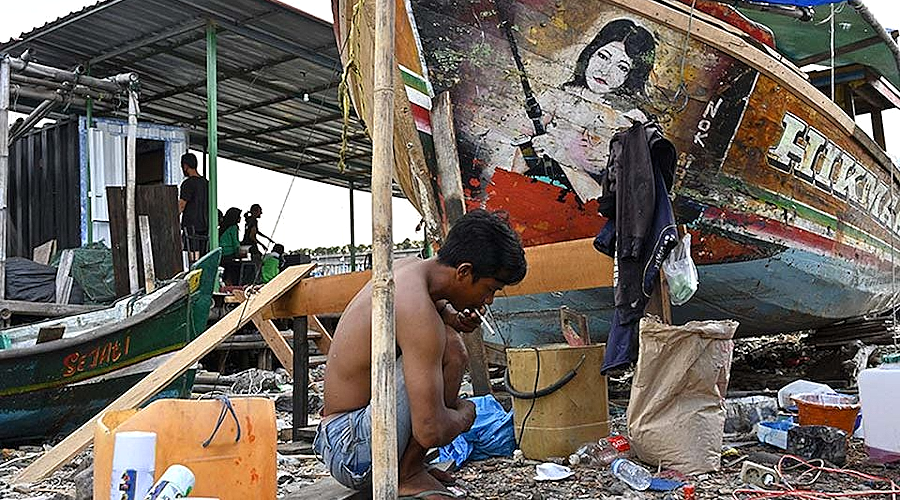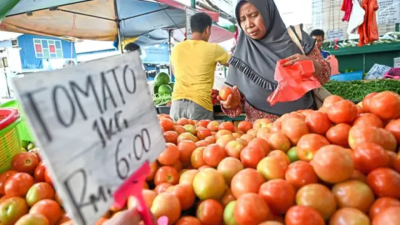
JAKARTA: Recent data from the World Population Review shows that Indonesia ranks fifth among countries with the highest smoking rates in the world.
It is noted that smoking prevalence in South and Southeast Asia tends to be significantly higher among men compared to women.
Alarmingly, Indonesia has the highest male smoking rate globally, with 74.5 percent of Indonesian men reported to consume tobacco regularly.
This is particularly concerning given that, according to the World Health Organization (WHO), tobacco use is responsible for more than 8 million deaths annually.
Cigarettes not only kill, as global public health campaigns have repeatedly warned, but they also starve.
In many low-income households, cigarettes are not simply a vice, they are a daily expenditure that competes directly with food, especially nutritious food. The cost is paid in the silent crisis of malnutrition, which disproportionately affects children and women in poor families.
According to Statistics Indonesia (BPS), the average per capita monthly expenditure on cigarettes and tobacco reached Rp 94,476 (RM25) in March 2024. This figure places tobacco as the third-largest food-related spending item, after prepared foods and grains.
This spending pattern highlights a troubling trade-off: Cigarettes often displace essential food items, particularly in poor and near-poor households.
Using data from the March 2024 National Socio-Economic Survey (Susenas), BPS analyzed how smoking behavior interacts with nutritional intake across economic classes.
The findings are stark. Individuals in households where the head smokes consume significantly fewer calories and less protein on average than those in non-smoking households.
This effect persists across all income groups, but the nutritional gap is most pronounced in low-income families, where baseline intake is already low.
Poor households operate within extremely narrow margins financially, nutritionally and socially. In these conditions, every decision carries disproportionate consequences.
When smoking becomes a routine expense, it is not just a matter of being a health risk, but of economic sacrifice.
Eggs, vegetables, fish and milk are not only food, they are developmental building blocks. Their absence in daily consumption patterns leads to undernutrition, weakened immunity, poor cognitive development and long-term productivity loss.
This problem is not evenly distributed. Smoking prevalence rises significantly from adolescence and remains high through the productive years, particularly among individuals aged 30 to 49, according to BPS.
This is precisely the age group that typically bears the economic responsibility for families.
When household heads in this demographic allocate spending to tobacco, they compromise the nutritional needs of those dependent on them, including children, elderly parents and spouses.
The nutritional consequences of smoking are not speculative. Previous studies, including Djutaharta et al. (2021), have shown that increased household cigarette consumption is associated with lower adequacy of calorie and protein intake.
These findings support the more recent Susenas data, emphasizing that tobacco consumption actively reduces access to sufficient and quality nutrition.
The impact is subtle yet far-reaching; malnourished children today become less healthy, less productive adults tomorrow.
Unfortunately, tobacco control remains a fragmented area of policy in Indonesia. Excise tax on cigarettes has been raised incrementally over the years, but enforcement and implementation vary widely.
Moreover, the price elasticity of demand for cigarettes remains relatively low among low-income consumers, meaning that even as prices rise, consumption does not drop significantly. Instead, poor households may reduce food consumption even further to maintain smoking habits.
This dynamic reveals a larger issue: The state has not fully reckoned with the structural dimensions of tobacco consumption.
Smoking is not just a personal choice; it is influenced by stress, job insecurity, social norms and a longstanding culture of masculine identity. It thrives in environments where education is limited, services are scarce and alternatives are non-existent.
To address this, Indonesia must shift from reactive to proactive policymaking.
Tobacco taxes alone are not enough. They must be coupled with strategic investment in smoking cessation programs, nutritional assistance and household-level behavioral interventions.
In many low-income households, cigarettes are not simply a vice, they are a daily expenditure that competes directly with food, especially nutritious food.
Currently, very few public health facilities offer free or low-cost services to help individuals quit smoking, and where such programs exist, awareness and uptake remain minimal.
This is especially problematic in rural and low-income urban areas, where smoking rates are high and access to health services is limited.
Social protection programs also need to be more nuanced. Conditional cash transfers should not only encourage school attendance or prenatal visits, but they should actively discourage household tobacco consumption.
This can be done by embedding educational content, incentivizing nutrition-based spending or conditioning benefits on attendance at smoking cessation sessions.
The state should explore new indicators for household vulnerability that incorporate consumption patterns, not just income or assets.
Moreover, efforts to combat undernutrition must acknowledge the role of intra-household power dynamics.
In many households, men smoke while women manage food expenditures. This means that female caregivers often carry the burden of balancing tight budgets to provide sufficient nutrition, all while a portion of household income is spent on cigarettes.
Empowering women with greater financial control, stronger legal protection and targeted education can help shift household spending toward long-term well-being.
Beyond the household, tobacco consumption imposes significant fiscal burdens on the state. Healthcare costs related to smoking-related diseases are rising, straining public insurance systems like the BPJS health insurance scheme.
Yet the nutritional consequences, especially malnutrition due to reduced food intake, often go unmeasured and untreated.
Children suffering from mild to moderate malnutrition may not enter hospitals but will struggle in school, require remedial support and enter the workforce with lower earning potential. The long-term economic cost of this lost human capital is incalculable.
If Indonesia is to fulfil its Sustainable Development Goals (SDGs), particularly SDG 2 on zero hunger and SDG 3 on good health and well-being, it must confront tobacco consumption not just as a health risk, but as a systemic development challenge.
Cigarette spending among the poor must be treated as an indicator of economic inefficiency and vulnerability; one that undermines nutrition, education, gender equality and intergenerational progress.
What is needed is a paradigm shift in how the state understands “household welfare”. It is no longer enough to track income or food expenditure; we must assess what families are sacrificing in order to maintain socially accepted but harmful habits.
Spending on cigarettes in poor families is not an isolated vice; it is a structural indicator of disempowerment and economic stress. And until we address that, we cannot claim to be building an inclusive, healthy or resilient Indonesia.
Policy must catch up with the data. And the data is unequivocal: Cigarettes burn more than lungs; they burn futures.
ADVERTISEMENT
ADVERTISEMENT








































